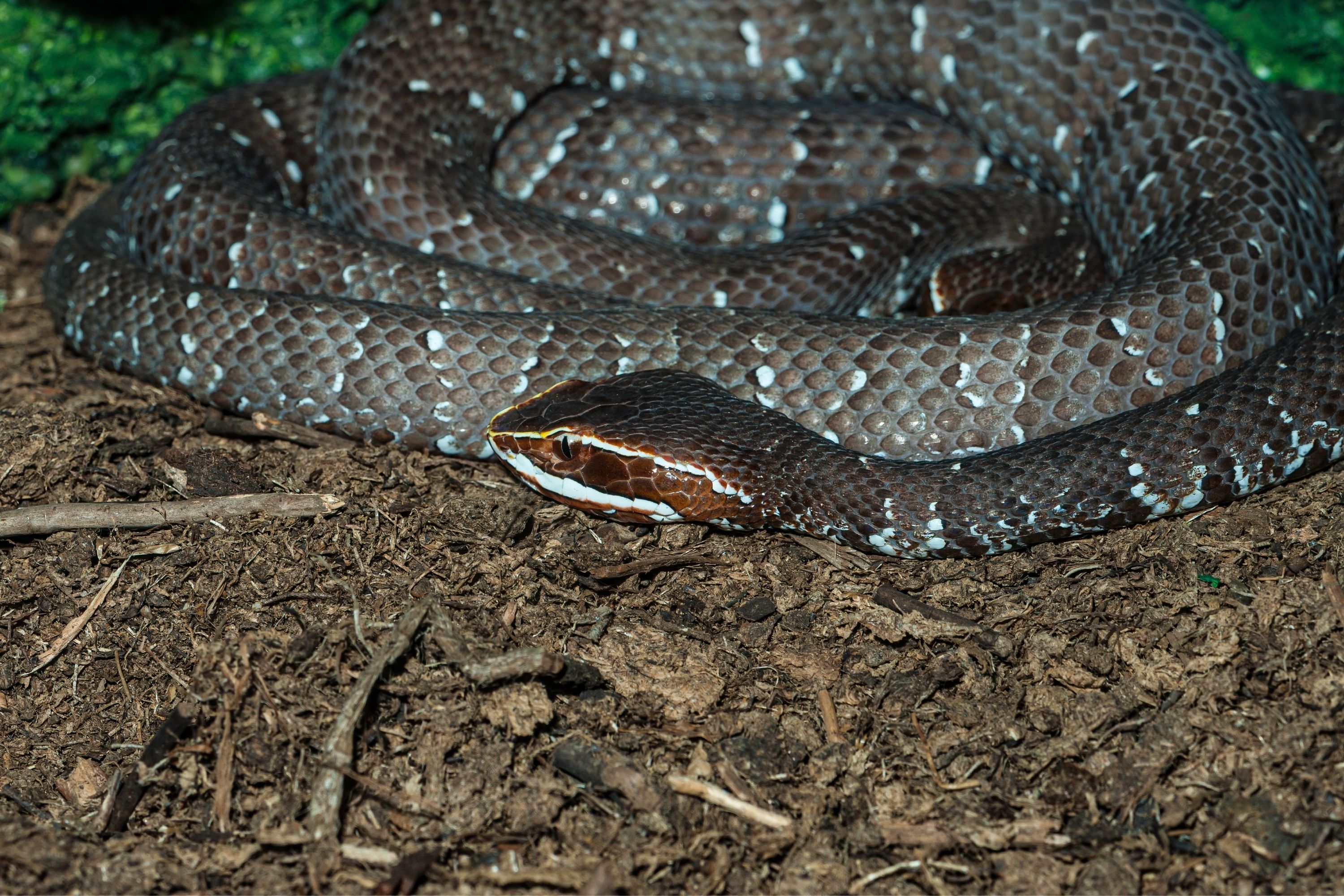Mexican cantil
(Agkistrodon bilineatus)

Description
Agkistrodon bilineatus is a highly venomous pit viper species found in Mexico and Central America as far south as Honduras. These are heavy-bodied snakes, and share the same general body structure with copperheads. They average around 60 cm (24 in) in length and have a broad, triangular-shaped head with small eyes that have vertical pupils. Coloration can vary, but most are brown or black, with darker brown or black banding, sometimes with white or cream-colored accents. A. taylori is known for being more elaborately patterned, often having distinct tan-colored banding, sometimes with orange or yellow accents that can almost appear gold in color. There are the following distinctive yellow and/or white lines on the head: a vertical line on the rostral and mental, a fine line on the canthus continuing above and beyond the eye to the neck, a broader line on the upper lip from the anterior nasal to the last labial. Juveniles are almost always distinctly banded, with bright green or yellow tail tips, which they use to lure prey. As they age, their pattern and coloration fade and darken. Mexico and Central America. On the Pacific side it is found from southern Sonora in Mexico south through Guatemala, El Salvador, and Honduras. The type locality given is "Pacific coast of Guatemala." This species is classified as Near Threatened (NT) on the IUCN Red List of Threatened Species (v3.1, 2001). A species is listed as such when it has been evaluated against the criteria but does not qualify for Critically Endangered, Endangered or Vulnerable now, but is close to qualifying for, or is likely to qualify for a threatened category in the near future. The population trend is down. Year assessed: 2007. The primary ecological concern is habitat loss. Much like the cottonmouth, with whom it shares a genus, this species has a reputation for having a nasty disposition and being extremely dangerous, a reputation probably not well deserved. They are generally shy by nature, and if threatened their first instinct is to rely on camouflage. If unable to do so they will use a threat display to ward off potential predators. The tightly coiled animal will raise the last several inches of its tail, this portion often being bright yellow or green in juveniles and a faded yellow or green in adults, the animal will then tail vibrate, creating a loud whipping sound against its coils or surroundings.
Taxonomic tree:







